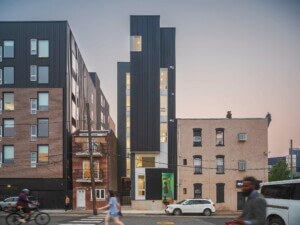The White House has published the “Housing Development Toolkit” in a bid to allow cities meet housing demands. The paper derides the current zoning laws and red tape that stand in the way of authorities building housing, thus leading to economic inequality and high rents that take a toll on the U.S. economy.
Advocating increased density (which will mean more tall buildings), faster paths to construction, and fewer zoning barriers, the toolkit will not be welcome among NIMBY protestors. However, developers, mayors, and builders may think differently. The paper outlines “actions that states and local jurisdictions have taken to promote healthy, responsive, affordable, high-opportunity housing markets,” including:
- Establishing by-right development
- Taxing vacant land or donate it to non-profit developers
- Streamlining or shortening permitting processes and timelines
- Eliminating off-street parking requirements
- Allowing accessory dwelling units
- Establishing density bonuses
- Enacting high-density and multifamily zoning
- Employing inclusionary zoning
- Establishing development tax or value capture incentives
- Using property tax abatements
The paper also says:
Over the past three decades, local barriers to housing development have intensified, particularly in the high-growth metropolitan areas increasingly fueling the national economy. The accumulation of such barriers—including zoning, other land use regulations, and lengthy development approval processes—has reduced the ability of many housing markets to respond to growing demand. The growing severity of undersupplied housing markets is jeopardizing housing affordability for working families, increasing income inequality by reducing less-skilled workers’ access to high-wage labor markets, and stifling GDP growth by driving labor migration away from the most productive regions. By modernizing their approaches to housing development regulation, states and localities can restrain unchecked housing cost growth, protect homeowners, and strengthen their economies.
“When unnecessary barriers restrict the supply of housing and costs increase, then workers, particularly lower-income workers who would benefit the most, are less able to move to high-productivity cities,” said Jason Furman, chairman of the Council of Economic Advisers, speaking to Politico. “All told, this means slower economic growth.”
“It’s important that the president is talking about it,” said Mark Calabria, director of financial regulation studies at the Cato Institute. “Local restrictions on housing supply are a crucial economic issue. I would say it’s one of the top 10.”
A link to the toolkit can be found here.










